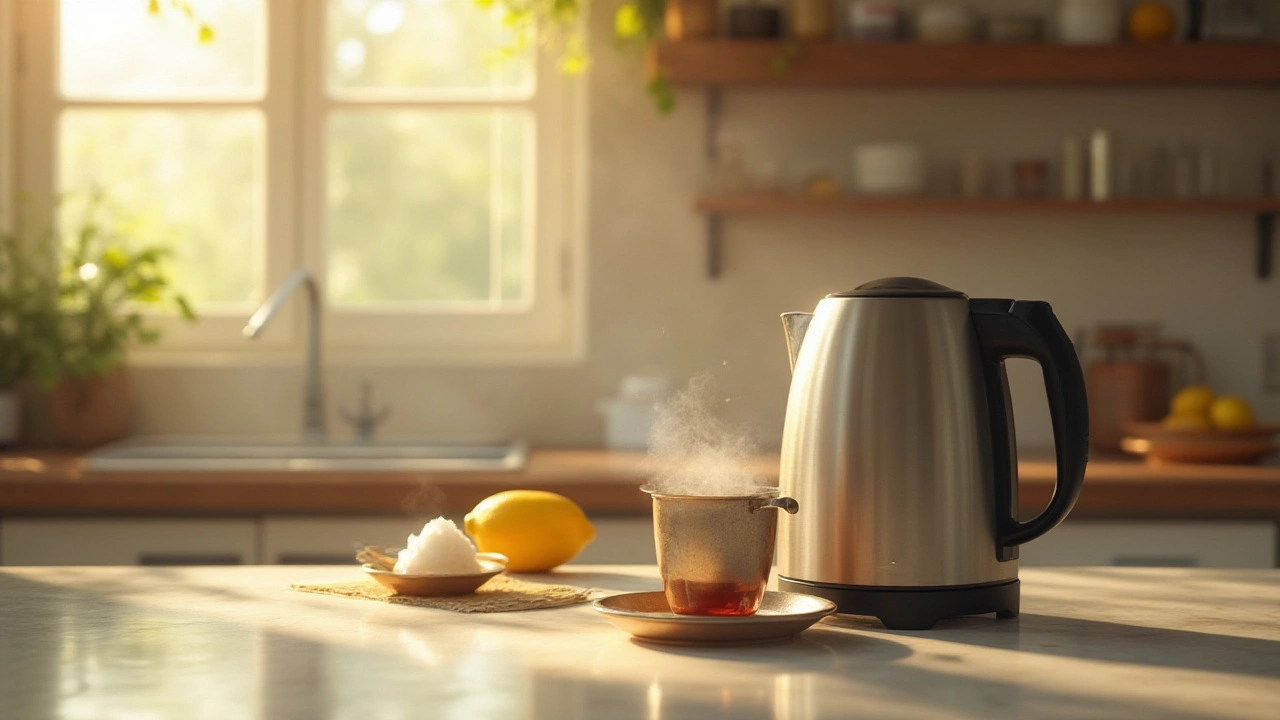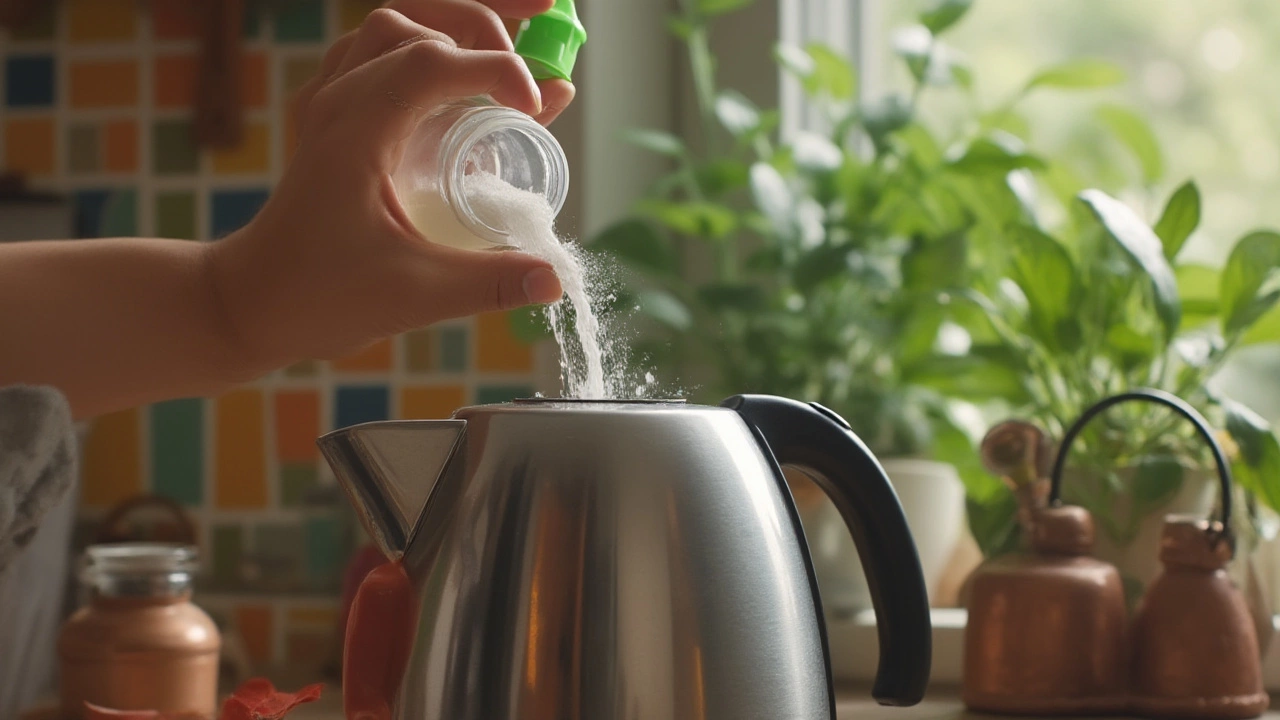
If you’ve ever poured water for a cuppa and noticed white flakes floating or clinging inside your kettle, you’re in the limescale club. It sneaks up on people living in places with hard water, and in Brighton, it’s a daily nuisance. People think it’s harmless, but over time, limescale forms a stubborn crust that messes with the taste of your tea and punts your kettle into early retirement.
Why Does Limescale Build Up in Kettles?
Limescale is mainly calcium carbonate. It shows up because the water in many parts of the UK, especially the South East, is considered “hard”—heavy with chalk and minerals picked up as water flows through rocks. When you boil hard water, the minerals can’t stay dissolved, so they settle out, sticking to anything they find, like your kettle’s element or the jug sides. It’s like water is quietly sowing little rock gardens inside your kitchen gadget.
Across England, over 60% of homes live with hard water. Brighton’s water is some of the hardest around. Limescale doesn’t form all at once—it starts as a thin film, and with repeated boiling, builds up into thick, crunchy layers. And while that grey-white scum isn’t toxic, it can crack heating elements, raise bills, and wreck the comforting taste of tea. Plus, the kettle works overtime to heat water, gobbling up more electricity. According to UK utility data, limescale buildup can increase kettle energy use by up to 30%—imagine paying more for slower, grittier tea!
Most people only see the surface level, but inside an average kettle after a few months without cleaning, scientists have found 2 to 5 grams of scale. That’s equal to about 2 sugar cubes—clogging pipes, slowing boiling times, and if left for years, even causing complete element failure. Modern kettles with hidden elements delay the worst of it, but they’re not immune. Every boil thickens the layer a bit more.
Maybe the most annoying part is how quickly it comes back. You can descale, scrub, and rinse, but unless you change what’s happening with the water itself, limescale keeps returning. Understanding why it happens is the first step—then you can deal with it and cut it off before your kettle gets crustier than your old hiking boots.
Everyday Habits to Avoid Limescale in a Kettle
Habits matter. Most people leave water sitting in the kettle after boiling, and this is exactly what limescale loves—standing water gives minerals hours to start crystallizing. Even if you forget once, it makes a difference. Getting into simple daily routines can seriously reduce the headache.
Here’s the easiest starting tip: don’t overfill. Boil only what you need, then empty out any remaining water when you’re done. The less water hanging around, the fewer minerals get a chance to do their nasty work. Try drying the inside occasionally with a tea towel if you see streaks or splashes left behind.
People often ignore the filter in the spout of most kettles. This little mesh is your first line of defense, catching chunks of scale before they’re poured into your mug. Cleaning or even replacing the filter every few weeks keeps down floating flakes. Most manufacturers sell spares cheap if yours goes missing.
If you use a kettle daily (and who doesn’t, around Brighton?), it’s worth checking for scale build-up at least once a week. Run your finger along the element or base—feel any roughness? That’s the start of scale. Wiping with a damp cloth right away easily clears away early deposits before they cement into place.
Another overlooked trick: set a regular descale day each month. Mark it on your phone, like a kitchen “birthday.” Staying on top means scale never gets a foothold. If your home’s water is especially tough, you might do this every fortnight.
Some people swear by adding a splash of vinegar to your rinsing water once a week. Vinegar's acid (acetic acid) breaks down minerals gently. Just be sure to rinse very well before boiling for drinks (nobody wants sour tea!)
Kettle manufacturers like Breville, Russell Hobbs, and Bosch all say the best habit is to clean little and often. Letting dirt and scale build up is what causes the real trouble—and it brings the taste of every boiled cup down with it. Make these tiny changes, and you’ll need to descale less and enjoy better drinks every time.

Natural and Chemical Solutions: What Works?
There’s almost a cult around the best way to descale a kettle: some people go all in on vinegar, others prefer lemon juice, and then there are the lab-made solutions with unpronounceable names. Let’s break down what actually works, and how often you need to do it if you want to prevent limescale in kettle for good.
White vinegar is the UK’s go-to hero. Pour in enough white vinegar to cover the element or scale line, top off with water, and boil. Leave it sitting for an hour—longer if your kettle looks like a quarry inside. Pour out and rinse well. The acetic acid dissolves calcium carbonate, which is why it fizzes up impressively on contact with old scale. Some folks prefer to run a full kettle of water afterward, just to be sure they aren’t sipping vinegar in their tea.
Lemon juice is the kitchen-friendly option. It does basically what vinegar does but smells a touch nicer. Squeeze half a lemon into the kettle, fill with water, boil and let sit. You’ll get a weaker acid than vinegar, so this works best if you’re cleaning often or your kettle isn’t super scaly yet. A bonus: lemons leave behind a fresh scent.
If you’re feeling fancy, manufacturers make specialty descaling tablets and powders, like Oust or Ecozone. These use citric acid, stronger than lemon but less pungent than vinegar. Tablets are quick—you just drop them in, boil, and rinse several times. The big win with commercial products is that they’re measured for domestic kettle volume, so you don’t risk overdoing it. If you’re in a hurry, this is the most reliable way to clear heavy crusts.
People also try baking soda, but it’s more about cleaning stains and less about dissolving mineral scale. It lifts discolouration but doesn’t touch the thickest crusts.
Another thing worth knowing: you don’t need harsh chemicals. Never use bleach or strong industrial cleaners—these are totally unnecessary, and can even corrode modern kettle elements or leave residues that aren’t great for health.
Here’s a simple cheat sheet for frequency depending on your water hardness:
| Water Hardness Level | Descale Frequency |
|---|---|
| Very Hard (Brighton, Oxford) | Every 2-3 weeks |
| Hard (London, Norwich) | Every month |
| Medium (Manchester, York) | Every 2-3 months |
| Soft (Cornwall, Highlands) | Every 6 months |
Whatever solution you pick, the big thing is always rinse after. Acid (even from kitchen sources) can flavour your next few brews or stick in the filter if you don’t flush it well. Clean out with fresh water three times as a minimum. These tips, repeated often, keep scale away and protect your kettle for years.
Upgrading Your Kettle & Using Water Filters
Kettles aren’t all created equal. Some modern models have anti-scale coatings, special filters, or even descaling programs meant for the hard water zones. If you’re struggling despite regular cleaning, it might be time to look at an upgrade or some new kit.
First off, look for kettles with built-in limescale filters. A lot of the newer Breville, Dualit, and Bosch models include a stainless steel mesh at the spout, blocking crystals from falling in your pour. Some go further—a coated element or concealed coil so scale can’t stick as easily. Hidden elements mean the scum forms mostly on the flat base, so it’s easier to rinse away.
Descale notifications are turning up on newer smart kettles. These alert you when the heating time lengthens—basically when the kettle detects working too hard, so you know scale is returning before it gets bad.
If your tap water is chalky with bits floating even before boiling, consider a jug or in-line water filter. Classic Brita filters work by using activated carbon and ion exchange resin, snatching up calcium before it even reaches the kettle. Test it by boiling filtered water and unfiltered side by side—you’ll spot much less scale and a cleaner taste. In a Which? survey, households reported scale cut by up to 80% when using jug filters every week, and kettles lasted almost twice as long between cleanings.
There are also scale-inhibiting balls: little mesh pouches filled with stainless steel that some people drop into the kettle itself. Supposedly, they disrupt scale clumping into big chunks—though results can vary. If you’re curious, they’re cheap, and some folks love them.
Some Brighton homes are fitting whole-house softeners. These plumb into your main water supply, swapping hard minerals for sodium ions so taps across the property pour soft water. It's a bigger upfront spend, usually over £500, but you’ll see less scale not just in the kettle, but in the shower, dishwasher, and iron. Bear in mind, the sodium uptick isn’t for everyone—check with your doctor if you’re on a low-salt diet or have kidney issues.
Often, pairing a good kettle with a reliable water filter means you can go months without any crust. If you love gadgets, even smart kettles can alert your phone when they sense a scale issue, preventing shock “why is my kettle so slow?” moments. Technology isn’t a total fix—habits still matter most—but it does make things easier.

Myth Busting & Handy Lifehacks
The world is full of crazy advice about limescale. People try tossing rice, eggshells, and even potatoes into kettles to “soak up” minerals. Don’t bother. There’s no evidence these stunts work, and you risk clogging up the spout or filter. Sticking to tested solutions like citric acid, vinegar, or lemon juice actually do the job.
Here’s a myth you hear a lot: using bottled water stops limescale. Truth is, most bottled water (especially the “mineral water” kind) actually contains plenty of calcium and magnesium, sometimes even more than the stuff from your tap. Unless it specifically says “demineralized” or is distilled, you’ll be right back where you started.
Another half-true myth: Leaving water in the kettle between boils is “safe.” It’s not a taste or safety risk, but for scale, it’s trouble. Every hour standing, minerals have time to separate out and form stubborn crust on the surface. Always empty and dry for best results.
Lastly, surprise: the price of your kettle doesn’t decide how quickly scale forms. The big differences are the filter, element design, and how easy it is to get your hand or a cleaning sponge inside. Those stylish glass kettles tend to show scale more than hide it, so you notice every fleck—but glass isn’t more or less prone to crust than stainless steel.
If you’re desperate and out of vinegar, a quick hack is boiling a water and lemon slice mix, then adding a pinch of citric acid powder (found in the baking aisle). The fizz will help cut through light build-up. If you don’t want to scrub at all, drop in a cleaning tablet, leave overnight, and rinse next morning—job done without lifting a finger.
Remember, the fastest way to avoid limescale build-up is always prevention: a filter, regular emptying, and an acid treatment now and then mean you never have to deal with a kettle that crunches when you shake it. Your tea—and your wallet—will thank you.